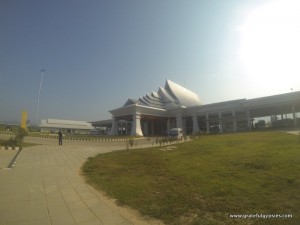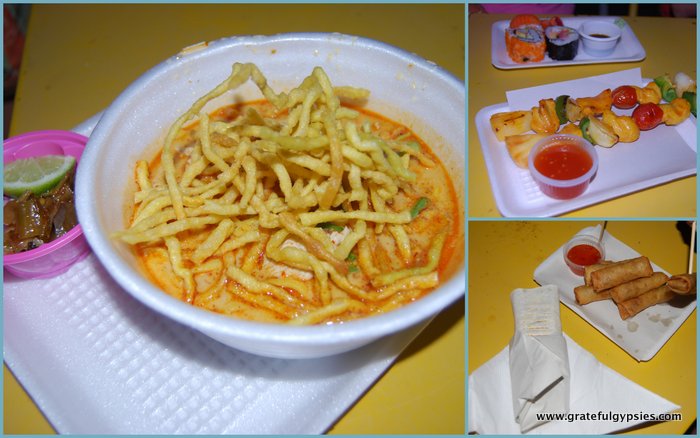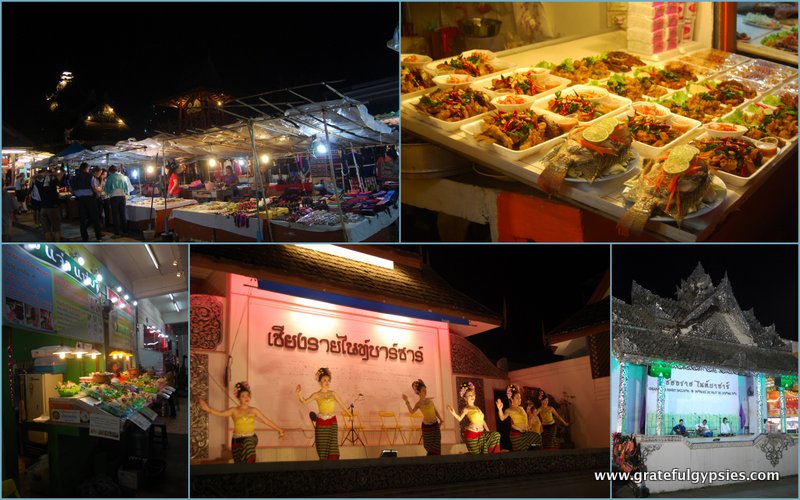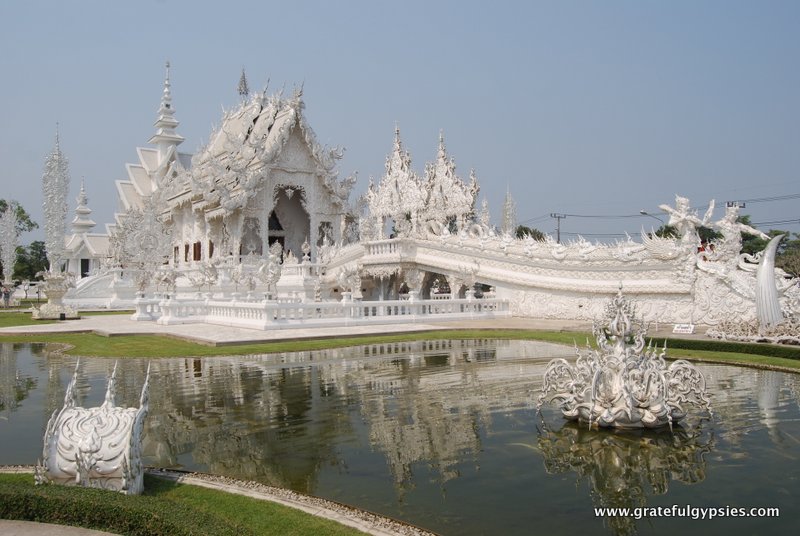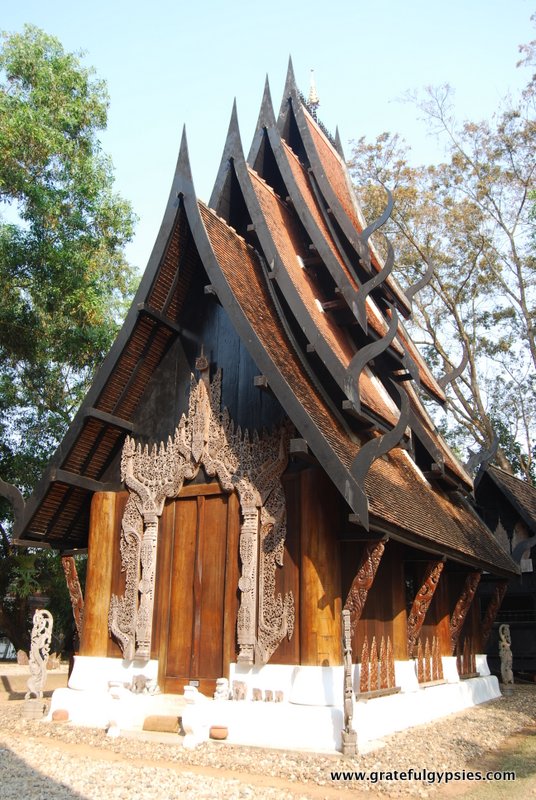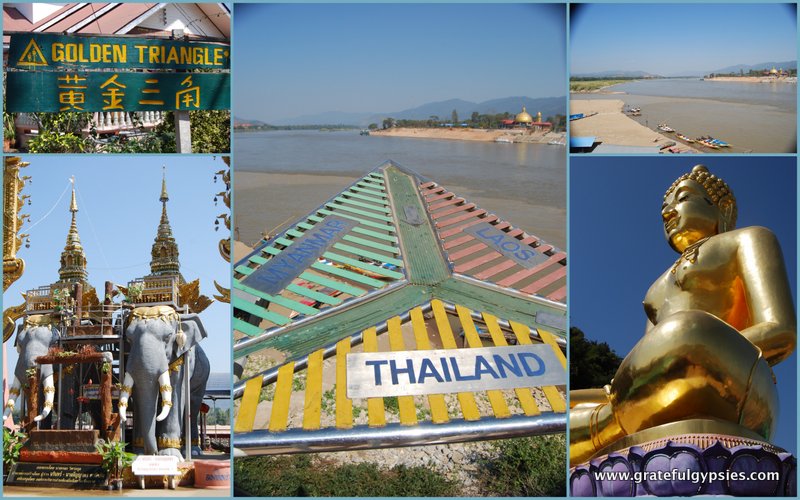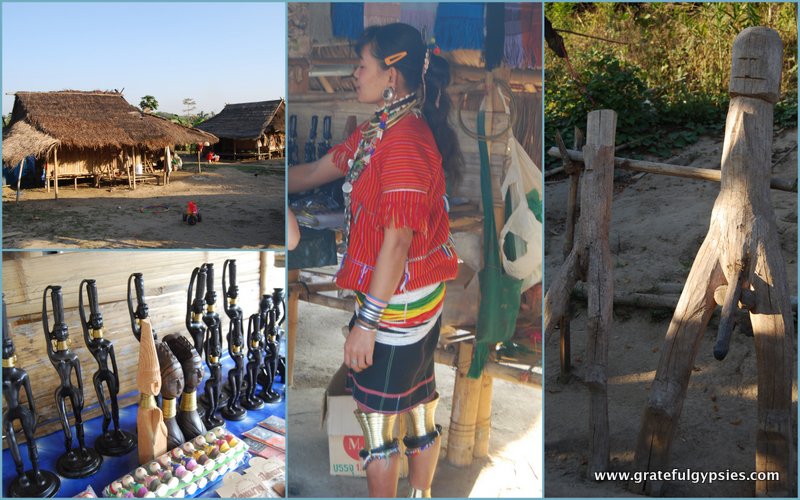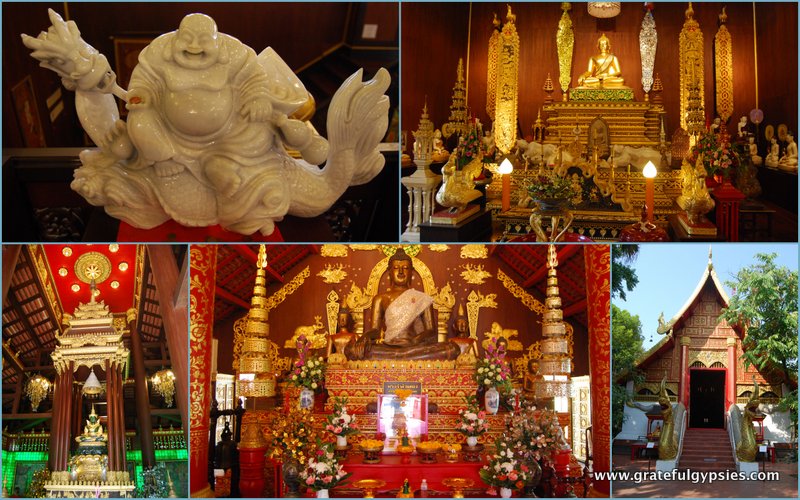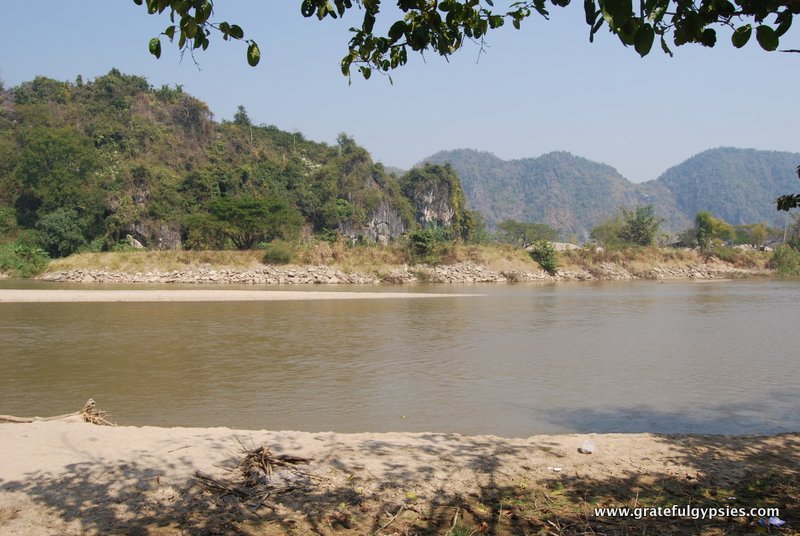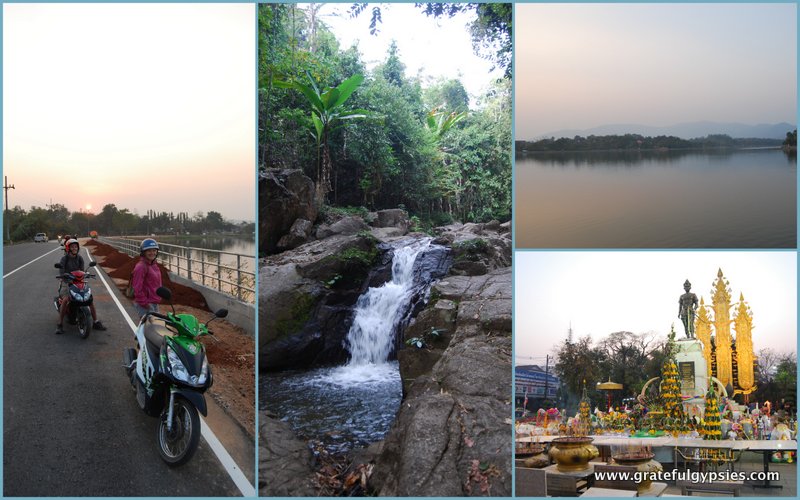A Guide to Chiang Rai Posted by sasha on Sep 25, 2014 in Culture, Travel, Uncategorized
Depending on which way you’re headed in a Southeast Asia adventure, Chiang Rai (เชียงราย) may be your first or last stop in Thailand. This northern provincial capital is often visited on a day trip or used simply as a necessary transit stop, but there’s much more to do here if given a few days. On my first trip to Thailand, we visited the area on a day trip from Chiang Mai. The jaunt up to Chiang Rai and the Golden Triangle was a bit pricey, super tiring, and featured a few less than stellar stops – “Let’s visit the border with Myanmar so you can pay $10 just to step foot into the country and get a stamp on your passport!” Not my idea of a good time. From there, we took the slow boat down the Mekong to Luang Prabang, Laos. This time around, we were going in the opposite direction and headed from northern Laos into Thailand. It was a wilde ride from Nong Khiaw to Chiang Rai, to say the very least.
The Minivan Ride from Hell
In Nong Khiaw, we were told that we’d be taking the usual minivan out of town to a larger bus stop, at which point we’d jump on a nice big bus headed from Luang Prabang and into Thailand. Based on what we were told, we thought we had an hour or so of waiting at the bus station. As such, we ordered some dinner and a few beers to pass the time. Not ten minutes later, and a man was frantically running over to our table telling us it was time to go. There was no bus in sight; rather, they began stuffing our bags into yet another van. We crammed in with about twelve locals, still under the impression that we’d eventually be getting on a proper bus. The next few hours were intense, as the van dodged massive potholes left and right, speeding around curves high up on a mountain road with absolutely no barriers protecting vehicles from a long tumble down. It didn’t help much that the only English words our driver knew were, “Smoking! Drinking! Beer Laos! OK!”
By now it was pitch black outside and it was clear that we’d be packed like sardines in this van all night. Our driver was clearly losing steam, and there were multiple occasions where he had to splash cold water in his face or roll down the window to wake himself up. None of the Laotians seemed concerned, however, as they were all somehow sleeping peacefully while we swerved along a dark road in a van steered by a guy pounding energy drinks and chain smoking – “Smoking! Drinking! OK!”
Miraculously, we survived the overnight journey and arrived at the Laos-Thai border 30 minutes or so before opening. We were told we could go through early, of course for a fee. Not wanting to contribute to any more Asian border corruption, we opted to wait and hold on to our baht. Once through customs, we boarded a nice, big, empty bus bound for Chiang Rai and enjoyed a fantastic and much deserved nap.
Feasting in the Night Bazaar
Upon our arrival in Chiang Rai, we decided to relax in the hostel, get some proper sleep, and basically breathe a sigh of relief that we were all still alive. When you’ve got a group of hungry, weary backpackers, the best place to go in Chiang Rai is definitely the night bazaar. There are tons of stalls cooking up cheap, tasty food of all varieties. Grab a bowl of khao soi (ข้าวซอย), a spicy curry soup that’s a specialty of northern Thailand. You can complement the noodles with sushi, kebabs, spring rolls, or plenty of other mouth-watering snacks.
There’s more than just food here, as you can also enjoy a cultural performance of music and dance, have a beer with friends, or do a little shopping. As there are generally far less tourists in Chiang Rai than Chiang Mai, this market has more of a local feel than those of CM.
The White Temple and Black House
The highlight of our visit to Chiang Rai was definitely the day spent riding motorbikes to visit two very different places set up by two very different artists. First up is the White Temple, Wat Rong Khun (วัดร่องขุ่น) in Thai. Designed by artist Chaloemchai Khositphiphat, this stunning series of temples and galleries has to be seen to be believed. Unfortunately, a recent earthquake did some serious damage, but repairs are being done and work will continue on this artist’s incredible creation.
On the other side of the city, you’ll find the Black House. A completely contrasting image to that of the White Temple, this museum is the brainchild of artist Thawan Duchanee. Scattered across the grounds, you’ll find many small black houses in Balinese and Burmese styles. Inside many of the houses are paintings, sculptures, and antique furniture. Oh yeah, you’ll also find tons of bones, animal skins, and other various creepy items.
These two places are so interesting and photogenic that they deserve their own post with more details and tons of pictures. Subscribe to the blog to make sure you don’t miss out on that or the videos that will be accompanying all posts.
The Golden Triangle
A popular spot to visit in Chiang Rai is the Golden Triangle (สามเหลี่ยมทองคำ), the place where Thailand, Laos, and Myanmar meet at the confluence of the Mekong and Ruak rivers. While this area is famous for poppy cultivation and the resulting opium production (second in the world only behind Afghanistan), the section in Thailand is primarily a tourist trap. The scenery is alright, but I wouldn’t put it high on your list of things to do. Apparently there are also a few opium-related museums that seem rather interesting, but we weren’t taken there on our tour.
Hill Tribe Visits/Trekking
There are many hill tribes that call northern Thailand home, and visiting their villages either on a tour or as part of a longer trek is also a popular activity in Chiang Rai. As part of our day tour, we were taken to a “Longneck Village” – home to a sub-group of the Karen hill tribe who fled Burma in the mid-1900s. The women in this tribe begin wearing brass rings around their neck at a young age, which eventually distorts their collarbones and gives them the long neck. Our visit was a bit depressing, as it really felt more like a human zoo than anything else. Rather than dropping by for a photo opp on a packaged bus tour, it’s much better to visit these hill tribe villages on a multi-day trek where you’ll be with a much smaller group and actually sleep in the villages. Although we didn’t do such a trek in Chiang Rai, it’s very easy to organize one in the various travel agencies in the city.
Wat Phra Kaew
This beautiful temple is famous for once having been home to the Emerald Buddha, which now resides in Bangkok in a temple of the same name. Spend an hour or so here admiring the temple and perusing the museum with plenty of artifacts on display, including a replica of the Emerald Buddha.
Getting Lost on a Motorbike
If you get tired of temples and the busy streets of the city, just jump on a motorbike and cruise for a while. There are plenty of options for things to do in the surrounding area that aren’t too long of a ride away. Take a walk in Namtok Khun Kon Forest Park (วนอุทยานน้ำตกขุนกรณ์) to see Chiang Rai’s largest waterfall, or hit up some of the many other parks in the area for easy hiking trails and some peace and quiet. Locals like hanging out along the Kok River (แม่น้ำกก), where you can enjoy a picnic on “Chiang Rai beach” or take a cruise along the river. On your way back into town, stop at the The King Mengrai the Great Memorial (อนุสาวรีย์พ่อขุนเม็งรายมหาราช), where you’ll see people making offerings to the 13th century ruler.
There are also plenty of museums, cultural centers, galleries, and more in the city. For those who prefer the great outdoors, you can go hiking, rock climbing, cycling, or even golfing. It’s a great place to base yourself while exploring northern Thailand, especially if you don’t like the crowds and the chaos of Chiang Mai. Both are worthy of a visit, though, especially if traveling to or from Laos. We’ll have much more on northern Thailand in the coming weeks, including a few videos about Chiang Rai.

Build vocabulary, practice pronunciation, and more with Transparent Language Online. Available anytime, anywhere, on any device.
About the Author: sasha
Sasha is an English teacher, writer, photographer, and videographer from the great state of Michigan. Upon graduating from Michigan State University, he moved to China and spent 5+ years living, working, studying, and traveling there. He also studied Indonesian Language & Culture in Bali for a year. He and his wife run the travel blog Grateful Gypsies, and they're currently trying the digital nomad lifestyle across Latin America.



